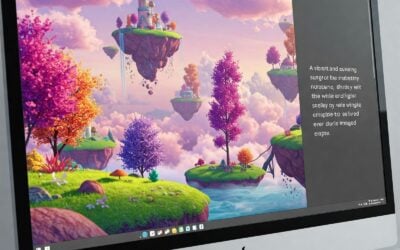Authentic learning sounds great in theory. Who wouldn’t want to give students real-world practice with what they’re learning? You’re just having trouble figuring out how you can incorporate it into your curriculum. It may seem overwhelming. These suggestions will show you just how easy it is to incorporate authentic learning into any curriculum. You may have already integrated it in your course design.
Videos
You can use videos to show students exemplars of procedures and techniques they’ve learned. You can stop videos at specific instances to ask students pointed questions. The videos guide your discussion and help students see a visual representation of what they’re learning
Additionally, videos can also allow students to show rather than tell their learning. They have the opportunity to put the skills they’ve learned to the test in a safe environment. Students can then view and evaluate their work in the video. It gives students ownership over their learning and allows them to make adjustments based on their discoveries.
- Show EMT students a video of a trauma situation.
- Ask dental hygiene students to make a video of them completing a teeth cleaning.
Portfolios
Portfolios give students the opportunity to showcase what they’ve learned to prepare them for their upcoming profession. A portfolio can include the student’s resume, examples of pre-professional projects completed, and a writing sample. The goal of the portfolio is to showcase the candidates’ growth and accomplishments throughout their educational training.
Some questions students can answer within their portfolios include:
- What are your reasons for pursuing a career in health care?
- What lessons have you learned in your experiences that have best prepared you for a career in health care?
Discussions Boards
Discussion boards get students to think critically. They can ask questions, express opinions, and learn from others. What’s more real world than that? When creating discussion board questions, be sure there is an opinion element included. You don’t want to ask questions that simply ask students to relay facts to you. You can also use scenarios as the basis of your questions. Ask students what they would do in a given situation.
Download this free sample project-based learning activity.
- While checking a patient’s vital signs, his blood pressure begins to drop. What do you do?
- A woman comes into the emergency room complaining of abdominal pain, what questions do you ask?

Project-Based Learning (PBL)
PBL takes the most amount of instructor planning, but just might lead to the greatest student learning. PBL puts students in real-world scenarios. The closely relate to situations they’ll likely face in future careers. Students need to react in real-time and collaborate to make critical decisions. Here are some examples.
- Medical students decide how to proceed when faced with a patient exhibiting a specific symptoms.
- Sonography students read an ultrasound and provide specific measurements based on what they see.
Authentic learning comes in many shapes and sizes. No matter which authentic learning path you choose, make sure it’s well planned to ensure optimal learning experiences for your students.




